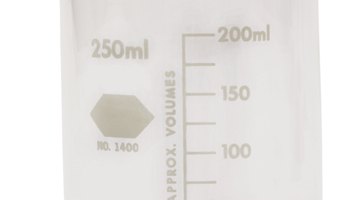Borax & Antifreeze
Borax and antifreeze are two substances that you might have around the house. Borax is most commonly found in the laundry room as a detergent booster to reduce odor and lift stains. Antifreeze is generally found in the garage, where it is used as a coolant in the engines of cars and trucks.

Both substances are inherently useful, but they can also be used in combination.
Chemical Makeup
Borax is the common name for the compound called sodium borate or disodium tetraborate. It is a white powder made up of colorless crystals. Natural mineral deposits of borax are mined, much like salt. Antifreeze is a solution of water and ethylene glycol or propylene glycol, which are alcohols that form when ethylene oxide or propylene oxide, respectively, react with water. When using antifreeze in combination with borax, you will be using the ethylene glycol formulation.
Antifreeze Additive
Antifreeze might be primarily water and ethylene glycol, but it also contains additives that improve its function as an automobile coolant. One common additive is borax decahydrate, a boron containing salt formed from boric oxide, sodium oxide and water, a cousin of your laundry detergent booster. The purpose of borax decahydrate in antifreeze is to prevent corrosion of the metal parts of the engine. As antifreeze breaks down, it forms an acid. The borax decahydrate neutralizes that acid, preventing it from oxidizing the metal surfaces it contacts.
Dry Rot Treatment
Mix borax and antifreeze as a fix for a common household problem -- dry rot in wood. Dry rot is a fungus that results from too much moisture in contact with wood. The fungus consumes the wood, making it soft, crumbly and less effective at holding your house up. Wood rot can be difficult to treat because it is tough to remove all of the fungus. A combination of borax, antifreeze and sodium borate can penetrate the wood and kill the fungus, as well as any wood-eating bugs.
Toxicity Warnings
Mixing borax and antifreeze is an effective treatment for dry rot, but you need to be careful keep children children or pets away from the treated surface. Ethylene glycol is sweet-tasting and odorless, but it can depress the central nervous system and damage the heart and kidneys, potentially fatally, if ingested. Cases of antifreeze poisoning are not uncommon in pets. Borax is less toxic, but can be harmful if ingested in large quantities. Mixing the borax with sweet-tasting antifreeze may increase the chances of accidental ingestion.
References
- Live Science: What is Borax?
- Encyclopaedia Britannica: Antifreeze
- 20 Mule Team Borax: Borax Decahydrate
- Living with Bugs: Dry Rot Damage & Treatment in Wood
- The Antique and Classic Boat Society Inc.: Chemotherapy for Wood Rot
- Agency for Toxic Substances & Disease Registry: Ethylene Glycol and Propylene Glycol Toxicity
Writer Bio
Based in Wenatchee, Wash., Andrea Becker specializes in biology, ecology and environmental sciences. She has written peer-reviewed articles in the "Journal of Wildlife Management," policy documents,and educational materials. She holds a Master of Science in wildlife management from Iowa State University. She was once charged by a grizzly bear while on the job.
Photo Credits
- PhotoObjects.net/PhotoObjects.net/Getty Images
- PhotoObjects.net/PhotoObjects.net/Getty Images
More Articles



